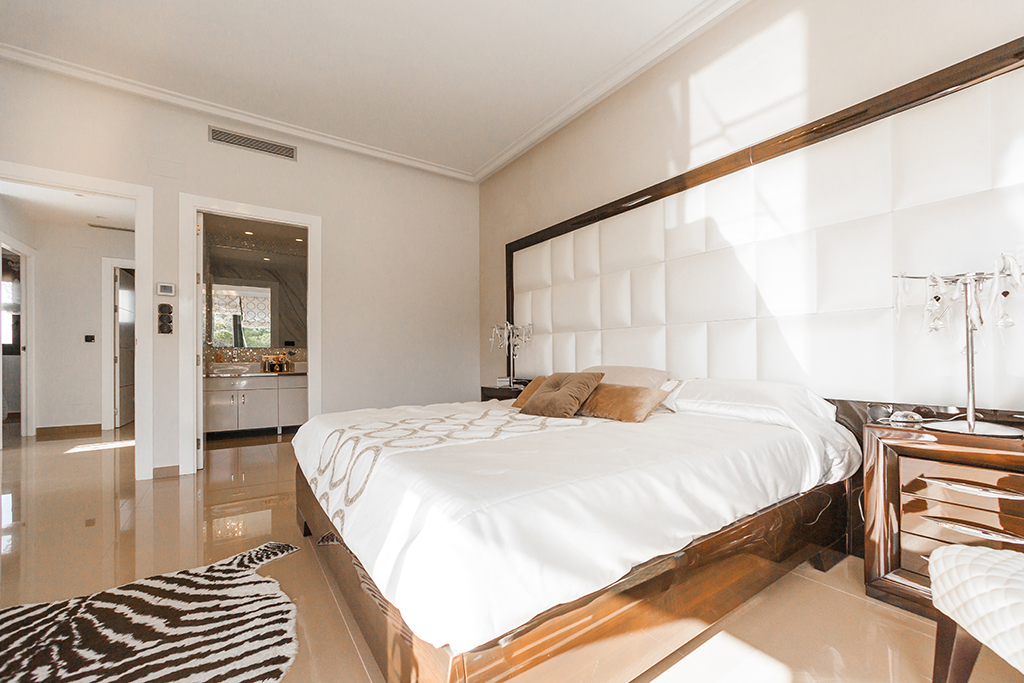Room by Room, Automation is Changing Interior Architecture

Robotics and automation are a staple of any vision of how we will live in the future. Among architects and designers, this trend crosses a variety of scales, from smart cities to smart kitchens. As we outlined in our Trends That Will Influence Architecture in 2019, recent years has seen a strengthening in how interior spaces are being transformed by technologies, with searches for Domotics soaring by 450% in twelve months.
While utopian (and dystopian) visions of interior spaces alive with responsive automated systems are still largely unrealized, there is clear evidence from architecture firms and product manufacturers alike that the growing domination of robotics and automation we see in transport, finance, security and other sectors is also finding its feet in interior design. Below, we outline four areas where innovations have already been showcased and adopted.
Décor
While robotics is often envisioned as a tool for performance in interior spaces, its use also extends to aesthetics. In 2018, Carlo Ratti Associati (CRA) unveiled Scribit, a “writing robot” which draws images and text on any wall surface, turning office, living areas, and bathroom walls into a blank canvas for artistic expression. Using in-built engines, Scribit can draw, cancel, and re-draw new content an infinite number of times, allowing users to print different images, messages, or feeds every day.
Scribit is always connected to the internet, allowing users to download, upload or source any online content. Operating in real time, Scribit immediately reproduces any data sent to it by the user, be it a restaurant posting the day’s menu, a financial firm posting stock market updates in its lobby, or an art enthusiast projecting their own content on the living room wall.
Furniture
The future of robotics in interior design will inevitably impact on how furniture is used and adapted, given how our increasing habitation of smaller spaces in cities calls for creative approaches to interior flexibility. Start-up innovators Bumblebee Spaces breaks the third dimension in pursuit of comfortable, efficient living, with what they describe as “a robotic A.I. butler furniture system that deploys down from overhead by tapping a control pad or by voice command.”
Drawing inspiration from minimalism and the KonMari anti-clutter movement, the Bumblebee system also creates a log of items kept in its timber storage cubes for long periods of time, gently reminding the user of when it may be time to let go of their long-forgotten possessions.
Lighting and Heating
Interior lighting is a prime target for automation, given the existing technologies that sense human presence and movement through spaces. Automated lighting controls have the potential to save energy in homes by limiting excess light in unoccupied rooms, while also enhancing occupant safety and convenience. One such example from our product catalog is Gira, whose system of automatic lighting control extends through home entrances, drives, hallways, and staircases.
Meanwhile, the MIT Senseable City Lab has, through its Local Warming project, explored the possibilities of a thermal cloud following humans through interior space. This thermal cloud would allow for infrared heating elements to merge with motion tracking, creating a precise personal climate for every occupant of interior spaces, enhancing comfort while reducing unnecessary heating of empty rooms.
Bathrooms
As we explored during our month-long focus on Innovation, home automation is even transforming rooms as basic and personal as bathrooms. While smart mirrors offer possibilities such as reading the news while brushing teeth, a new generation of showers are promising to save up to 90% of water and 80% of energy. These technologies constitute only a small fraction of the possibilities for the bathroom of the future. From body dryers to health-checking toothbrushes, to drawers that warm your towels, to flooring that sends out an alert if you fall, the possibilities seem endless.
What Can Architects Do?
With a vast array of robotic appliances and systems entering the market, architects and designers are faced with the challenge of designing and specifying for these systems’ implementation. Recently, we collaborated with AVE Chile to outline 8 tips on how architects can incorporate domotics into their next project, from testing systems before the process to installations by electrical specialists.
Wait! Don’t miss out on the latest insights
Sign up for Saschse Construction’s
e-newsletter below!
Featured Topics
ARCHITECTURE + DESIGN
INDUSTRY NEWS

